History of Air Conditioning
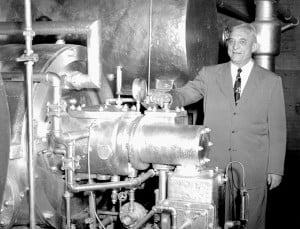 Throughout history, mankind has made continuous attempts to adapt to the physical discomfort of living in hot climates. From taking a nap in the shade to avoid the noon day sun, to creating architecture specifically designed to utilize our planet’s natural ventilation streams, the history of the human race is liberally sprinkled with examples of our desire to keep cool. Yet it is only in the last 100 years have we succeeded in developing mechanical systems that enable us to reach beyond simply taking advantage of our geographical situation to control our surrounding temperatures.
Throughout history, mankind has made continuous attempts to adapt to the physical discomfort of living in hot climates. From taking a nap in the shade to avoid the noon day sun, to creating architecture specifically designed to utilize our planet’s natural ventilation streams, the history of the human race is liberally sprinkled with examples of our desire to keep cool. Yet it is only in the last 100 years have we succeeded in developing mechanical systems that enable us to reach beyond simply taking advantage of our geographical situation to control our surrounding temperatures.
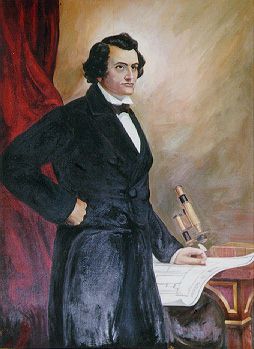 It is widely recognized that the first ‘modern’ cooling apparatus appeared in the 1830’s and was designed and built by an American physician from Apalachicola in Florida; Dr. John Gorrie. Gorrie’s simple machine consisted of a basic fan which blew across a large block of ice and cooled the wards at the hospital he was working in at the time.
It is widely recognized that the first ‘modern’ cooling apparatus appeared in the 1830’s and was designed and built by an American physician from Apalachicola in Florida; Dr. John Gorrie. Gorrie’s simple machine consisted of a basic fan which blew across a large block of ice and cooled the wards at the hospital he was working in at the time.
Then in 1881 as US President James Garfield lay on his deathbed, a team of naval engineers designed a method to ease Garfield’s discomfort. They constructed an apparatus that blew air through cloths soaked in water from melted ice. The device succeeded in lowering the room temperature by around 20 degrees but the consumption proved enormous–within eight weeks the process had devoured half a million pounds of ice.
Early 20th century air conditioning or “manufactured air” as it was then called, was seen as a novel industrial solution for steering humidity levels in textile mills with the goal of increasing productivity. But within a short time, further commercial applications were discovered. Food preservation, document protection and the cooling of beer and other beverages became commonplace and more and more cooling stations were built to provide controlled air to neighboring buildings.
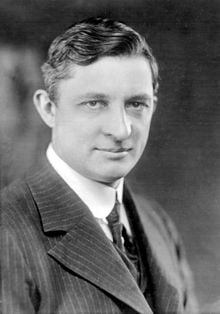 It was around this time that Willis Carrier appeared on the scene. Carrier, a mechanical engineer from Buffalo, New York, had a deep understanding of the relationship between dew points, humidity and temperature–an understanding we are told he gained from his experience waiting for a train on a foggy night. In1902 he introduced a spray-based humidity and temperature control system which heralded the tenuous expansion of air conditioning into hospitals, offices, apartment buildings and hotels.
It was around this time that Willis Carrier appeared on the scene. Carrier, a mechanical engineer from Buffalo, New York, had a deep understanding of the relationship between dew points, humidity and temperature–an understanding we are told he gained from his experience waiting for a train on a foggy night. In1902 he introduced a spray-based humidity and temperature control system which heralded the tenuous expansion of air conditioning into hospitals, offices, apartment buildings and hotels.
Known as the father of air conditioning, Carrier’s company became synonymous with air conditioning excellence. Carrier devised a method of utilizing chilled coils to cool air and reduce humidity down to an unheard of 55%. Known as his “Apparatus for Treating Air,” the device was able to adjust humidity levels to a fixed setting. This would be the forerunner of what we now know as the modern air conditioner, but it’s good to remember that not only were the early conditioner units extremely large and expensive–use of the toxic coolant ammonia also made them very dangerous!
In 1902, Alfred Wolff, an engineer from Hoboken in New Jersey was assigned the task of fitting out the New York Stock Exchange with a central cooling and heating system. Wolff is remembered for the design improvements he introduced, adapting the existing systems prevalent in the textile mills for use in other buildings. His innovations led to a revolution in the application of cooling technology. Many industries benefited; tobacco and pharmaceutical, as well as the meat and film industries, to name but a few.
In 1911 Willis Carrier presented his ‘Rational Psychometric Formula’ to the American Society of Mechanical Engineers. To this day, the air conditioning industry still uses that same formula.
Air conditioning first received wide public attention at the 1904 St. Louis World’s Fair where it was presented to almost 20 million baffled yet fascinated visitors. The modern wonder known as manufactured air had arrived.
Soon after their prestigious introduction to the public, the installation of air conditioners began to rapidly infiltrate everyday society. The first private residence to be fitted with the costly luxury was in Minneapolis in 1914 and was owned by Charles Gates, son of John Gates, a notorious but hugely successful gambler of the time.
The first real cool air experience for the average citizen came after 1917 when movie theaters became the next focus of the air conditioning industry. The New Empire Theater in Montgomery, Alabama is the first theater on record to receive a cooling system and in the same year the Central Park Theater in Chicago was specifically designed and built to utilize the new technology. Almost overnight, both venues became hugely popular and attendance numbers soared to unforeseen heights.
In 1922, two crucial breakthroughs in the development of air conditioners were achieved. Again it was Willis Carrier who led the way. First he substituted the toxic ammonia with the far safer dielene (dichloroethylene, or C2H2Cl2). Simultaneously, Carrier greatly reduced the size of the units and at last the cooling systems began to become mainstream with systems being widely installed in office buildings, department stores, private apartments and even in railroad cars.
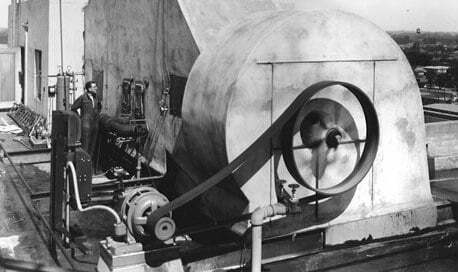 In 1924, The Carrier Company installed a trio of centrifugal coolers in the J. L. Hudson Department Store in Detroit, Michigan. The pleasing effect on shoppers was duly noted and air conditioning quickly became an integral part of any serious retailer’s marketing strategy. From there it did not take long for serving politicians to get in on the act. Between 1928 and 1930 the White House, the Senate and the House of Representatives were all equipped with cooling systems, as were many other government buildings across the country.
In 1924, The Carrier Company installed a trio of centrifugal coolers in the J. L. Hudson Department Store in Detroit, Michigan. The pleasing effect on shoppers was duly noted and air conditioning quickly became an integral part of any serious retailer’s marketing strategy. From there it did not take long for serving politicians to get in on the act. Between 1928 and 1930 the White House, the Senate and the House of Representatives were all equipped with cooling systems, as were many other government buildings across the country.
Yet some setbacks were also to be had. The spread of commercial air conditioning was greatly hampered during The Great Depression, and when at the World Fair in 1939 Carrier showed off his futuristic igloo, its further development was interrupted by the outbreak of World War II.
During the war, many manufacturers converted their production to aid the military effort. Chillers were removed from department stores and re-installed in military plants and returned after the war. Thousands of walk-in air conditioners were manufactured for the US Navy to keep food and other perishables fresh on their ocean journeys. Bespoke portable air coolers were used for airplane maintenance in tropical climates. And yet again we see the name of Willis Carrier leading the way in the further development and functionality of air conditioning systems. Carrier was called upon by the National Advisory Committee for Aeronautics to design a system that could reproduce the freezing conditions found at high altitude and thereby carry out crucial testing of airplanes. Many thought the task to be impossible. But once again carrier shone with his ingenuity and was rewarded with the highest honors the US Military could bestow on a commercial company–the Army and Navy E Award
With the end of World War II production returned to mainstream, commercial use and with the US economy about to boom, the future success of air conditioning was guaranteed. Americans in their thousands began to purchase home air conditioning units so that they could enjoy the benefits they had only experienced in larger buildings. Air conditioning became so popular so quickly that soon the demand exceeded the supply and by 1948, yearly production of the home cooling units had reached a staggering 74.000, almost three times that of just two years earlier. It would be another two years before US sales broke the one million barrier for the first time.
another two years before US sales broke the one million barrier for the first time.
Be Smart with Ducted Air Conditioning in Brisbane and the New Mitsubishi WiFi Controllers
 Brisbane Air is proud to announce the new Wi-Fi controllers. Created to suit busy ‘Brisbanite’ lifestyles, these Wi-fi controllers unlock the door to smarter cooling and heating.
Brisbane Air is proud to announce the new Wi-Fi controllers. Created to suit busy ‘Brisbanite’ lifestyles, these Wi-fi controllers unlock the door to smarter cooling and heating.
With the new smart Mitsubishi Electric WiFi controllers, you can control your home and/ or commercial air conditioning on-the-go via an internet connection and your smart phone.
What this means is that the new Mitsubishi Electric Wi-Fi Control gives you the freedom to tailor your heating and cooling needs with the touch of a button from anywhere to save time, money and energy.
We suggest adding these controllers to your new ducted air conditioning systems and wall hung split system air conditioners for both residential systems and commercial systems for even higher levels of energy efficiency, as theMitsubishi Electric WiFi controllers unlocks these extra control benefits, for additional control, wherever you are.
Why use Mitsubishi Electric WiFi controllers?
 The WiFi controllers allow you to remotely manage each area where air conditioning and the wifi controller is installed. With advanced software features each room can be individually monitored and adjusted.
The WiFi controllers allow you to remotely manage each area where air conditioning and the wifi controller is installed. With advanced software features each room can be individually monitored and adjusted.
For better efficiency, your ducted air conditioning can be monitored and adjusted as maximum and minimum temperatures are reached – all determined by the built in software and sensors.
Not only is this function ideal for businesses and home residences, but especially for children’s rooms and every room in a building. Want the lounge cooler or your child’s room a little warmer? No worries. Want to make the warehouse a little colder? You can do that too. The controller features a full range of options, including auto, heat, dry, fan speeds and cool.
When you install a WiFi control adapter on each of your indoor units, you’ll find that the whole system becomes a seamless and integrated unit. Click here for an interactive demonstration.
Benefit from extra flexibility
 Your air conditioning unit is working hard. Does it really need to be on now? You’re burning money in the home and office, in the past, there’d be nothing you could do. Until now…
Your air conditioning unit is working hard. Does it really need to be on now? You’re burning money in the home and office, in the past, there’d be nothing you could do. Until now…
With Mitsubishi WiFi controllers installed, remote adjustments are possible. Making rooms hot or cold in advance. No more waste. No more worry. No more worry about your stock perishing or after thoughts after leaving on a big trip.
The app tells you if your unit is on or off, wherever you are. This is particularly suitable for temperature sensitivesituations such as a florist, pet store or any situation where the delicate range of temperatures need to be consistently monitored.
What’s next?
Start benefitting from ducted air conditioning and Mitsubishi Electric WiFi controllers now. It’s easy to connect to your home or office air conditioning, and have control at your fingertips.
Get in touch with Brisbane Air today, and find out how you can ensure your home is comfortable when you need it to be wherever you happen to be. As a Mitsubishi Electric Diamond Dealer, we’re ready and qualified to help today.
Be Cool with School Air Conditioning
 If children complain about being unable to concentrate in class, one of the most likely causes is classroom temperature. Schools in which children regularly work in classroom temperatures of 28 degrees or higher may find themselves with lower than average examination results, and a problem with aggressive behaviour among their students!
If children complain about being unable to concentrate in class, one of the most likely causes is classroom temperature. Schools in which children regularly work in classroom temperatures of 28 degrees or higher may find themselves with lower than average examination results, and a problem with aggressive behaviour among their students!
For schools and colleges that want to up results and grades, and benefit from a happier learning environment, air conditioning commonly seen as a ‘must have’. However, despite these benefits, installation of air conditioning also raises questions about cost and architectural impact. The outcomes for schools that benefit from air conditioning surprises many ‘old school’ types (the ones who like to tell everyone that “In my day we weren’t spoiled with air conditioning. What are the kids of today complaining about?”).
Comprehension and concentration drops in the heat
Students that berate their teachers with complaints about the heat, hair plastered to their foreheads, and eyes dropping heavily, aren’t deliberately swinging the lead. Plenty of medical studies (and as reviewed by Professor Michael Nagel of the University of the Sunshine Coast) show that the brain begins to close down at 28 degrees.
By the time the temperature hits 30 degrees, the brain has begun to seek survival. Teachers asking their pupils to add two numbers together in such conditions are likely to be answered with blank faces and head scratching. Perhaps worse, high temperatures also affect the brain’s neurotransmitters – leading to disruptive behaviour which might otherwise be out-of-character.
Despite such medical evidence, Queensland has no upper temperature limit in its classrooms. However, this may be due to the perceived cost of installation of air conditioning: with no upper limit enforced, it is the responsibility of individual schools to foot the bill.
Cooling classes doesn’t have to be costly
The running cost of air conditioning in a school also surprises most. Ducted air conditioners allow different classrooms to be cooled to different levels from a central control panel. Timers can be used to make sure separate zones are switched off entirely when empty (and turned on manually when in use if outside the usual timetable). This means running costs are way lower than many would expect: comfort is maintained in an energy saving environment. Always conscious of costs, many of Brisbane’s businesses have chosen ducted air conditioning because of these benefits.
Architectural anonymity of schools air conditioning
Many schools, especially those with older buildings, are reticent to invest in air conditioning because of the potential architectural impact. However, modern units can be easily concealed, and silent running units produce virtually no noise pollution. From the outside, school buildings will maintain their traditional lines. Inside, students will be able to work in comfort and silence. One of Brisbane Air’s recommended manufacturers, Mitsubishi, has had its air conditioning installed in schools such as Brisbane Girls Grammar for reasons of cost, comfort, and design.
Benefit from the advantages of air conditioning in your school
The needs of every school vary. With more than three decades serving the Brisbane community with its air conditioning needs, Brisbane Airs’ technical experts are perfectly positioned to advice your school or college as to its exact air conditioning needs.
We’ll work with you to meet your aims and within your budget. You’ll be left with a more harmonious, hardworking student base. Your truancy figures will fall, tested results improve, and papers will no longer have to be chased across a classroom when an unexpected gust of wind blows through an open window.
Contact Brisbane Air today for a no obligation discussion of your requirements.
How Much Does Ducted Air Conditioning Cost to Run?
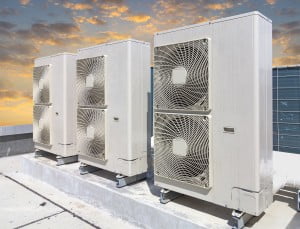
One of the questions our customers ask most often is “how much does ducted air conditioning cost to run?” Sometimes this is asked after the exact air conditioning components have been selected, when it is relatively easy to calculate running costs. Other times a customer will ask without knowing the make, model, size, and other specifics of their air conditioning needs. That’s a little like asking what it costs to run a new Toyota car: without knowing the size of engine, the driving conditions, and the cost of fuel there is no way to accurately assess running costs.
How to calculate ducted air conditioning running costs
The first thing to do when calculating the cost of running air conditioning is to select your air conditioning units. You’ll need to consider the space you need cooled (or heated) and then size your unit requirements from this. You should also consider the energy rating of different units: the higher the rating, the more energy efficient the unit is. With your units selected, you can now do some simple calculations to accurately estimate the running costs. Here’s how:
Step 1: From a recent electricity bill find the cost per kWh in cents.
Step 2: From the air conditioning manufacturer’s brochure, or the printed label on the side of your unit, find the electrical consumption (Total Input, kw) at its rated capacity.
Step 3: Multiply the cost per kWh by the unit’s electrical consumption at its full rated capacity.
Step 4: The answer is the cost per hour in cents.
Step 5: Calculate your daily cost to run ducted air conditioning by figuring out how long it will run and at what capacity. For example, if your electricity costs 20 cents per kWh and your unit has a Total Input of 3kw per KWh at full rated capacity, the cost per hour would be 60 cents p/h. If you intend to run the unit for 8 hours at 50% capacity, then the cost per hour would be:
20 x (3 x 50%) = 20 x 1.5 = 30 cents p/h
And the cost for 8 hours would be 30 x 8 = $2.40.
And that’s all there is to it! Don’t forget, though, that you might have different rates charged for your electricity at different times of the day. If this is the case, you will need to make more than one calculation.
When your ducted air conditioning is up and running, it will benefit from regular servicing to keep it in tip top condition – and so will your running costs.
Why Choose a Ducted Air Conditioner For Your Brisbane Office?
 During the warm summer months, when humidity is at its highest and heat at its hottest, hot, stuffy offices lead to stressed employees. Office productivity can slide and tempers fray quickly. Open windows increase noise levels, invite insects to further increase discomfort, and reduce office security. Heat also plays havoc with office equipment: it’s not only people that work less efficiently. A ducted air conditioning Brisbane system is the air conditioner of choice for the modern office, helping to reduce or remove all the problems that Queensland’s hot summer causes.
During the warm summer months, when humidity is at its highest and heat at its hottest, hot, stuffy offices lead to stressed employees. Office productivity can slide and tempers fray quickly. Open windows increase noise levels, invite insects to further increase discomfort, and reduce office security. Heat also plays havoc with office equipment: it’s not only people that work less efficiently. A ducted air conditioning Brisbane system is the air conditioner of choice for the modern office, helping to reduce or remove all the problems that Queensland’s hot summer causes.
Why ducted air conditioning is best for Brisbane offices
Split air conditioning systems work fantastically well in the home. They are compact, and can have wall-mounted units which look good outside. They can be used for heating and cooling, and work perfectly for single rooms. But for an office building, something with rather more punch is required. This is where ducted air conditioning proves invaluable in Brisbane.
A ducted air conditioner Brisbane is easily controlled to provide the optimum temperature and humidity. It is also probably the quietest of all air conditioning types. The system is controlled from a single device, enabling a constant temperature in each office within a building or across a large open office.
Benefit from a uniform environment
With all offices cooled, a ducted air conditioner provides a constant and consistent working environment. People moving from office to office will no longer go from hot to cold. Areas of work in an open office environment will all be equally cool. Spaces near a window will benefit from the same coolness as those on the other side of the office floor.
When office temperatures are correctly controlled, people work better. They become less stressed and produce more work of a higher standard; offices become more like the productive place they are designed to be and less like a gladiatorial battle ground.
Ducted air conditioners Brisbane are the ideal solution, no matter what size and style of office. They are designed for units to be positioned in ceiling recessed or under false floors. They work almost noiselessly and allow the maintenance of a constant environment. Your people will work better, feel more relaxed, and produce work of a higher quality.